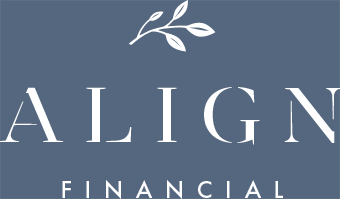This Thanksgiving, long-term investors may be having a difficult time finding reasons to be thankful. Indeed, record-high inflation, rising interest rates, and ongoing volatility in financial markets have tested our patience and resolve this year.
If you’re frustrated with rising prices and fluctuating account balances, you’re not alone. It’s often challenging to keep a long-term perspective during times like these. Yet it’s important to remember that the economy and markets are cyclical. In other words, this too shall pass.
In the meantime, there are a few areas of opportunity for which to be grateful–especially if you’re seeking respite from the unpredictability of the market. Series I Savings Bonds (I bonds), for example, actually become more valuable when inflation levels are high. But before moving all of your funds into government savings bonds, you should understand how they work, as well as the potential advantages and drawbacks.
Understanding Series I Savings Bonds
If you own bonds or bond funds in your investment portfolio, you may already have a basic understanding of how these securities work. Typically, bonds pay investors a fixed interest rate at regular intervals based on the bond’s underlying principal value. When the bond matures, the investor also receives the principal amount.
When inflation is high, interest payments on bonds become less valuable to investors. That’s because inflation diminishes their purchasing power.
To help investors protect their purchasing power during periods of high inflation, the U.S. government issues two types of inflation-indexed bonds: Treasury Inflation-Protected Securities (TIPS) and Series I Savings Bonds (I bonds). Inflation-indexed bonds differ from traditional bonds in that their interest payments increase or decrease alongside inflation.
Given record-high inflation levels this year, I bonds have received a great deal of attention in the financial media. Those who purchased I bonds before October 31, 2022, locked in a 9.62% interest rate for the first six months. The current interest rate has since fallen to 6.89%, which applies through April 2023.
How Do I Bonds Work?
With an I bond, investors receive both a fixed interest rate and a rate that adjusts for inflation. The U.S. Treasury sets the inflation rate for the next six months twice per year.
I bonds earn interest monthly, and interest is compounded semiannually. That means every six months, the bond’s interest rate is applied to a new principal value. In this way, the bond’s value continues to grow, and investors don’t receive the interest due until they cash out.
I bonds earn interest for up to 30 years. However, investors can redeem their bonds after 12 months. Furthermore, you must own an I bond for at least five years to receive all of the interest that is due. Otherwise, you lose the last three months of interest.
How Can Investors Purchase I Bonds?
To purchase I Bonds, you must have a valid Social Security Number and be a U.S. citizen, resident, or civilian employee. Children under 18 cannot open a TreasuryDirect account; however, parents and other adult guardians can purchase I Bonds on behalf of their children.
The purchase limit is $10,000 per person, per year, and you can only purchase I Bonds through TreasuryDirect.gov. In addition, you can buy up to $5,000 in paper using your federal income tax refund.
How Are I Bonds Taxed?
Series I Savings Bonds are exempt from state and local income taxes. However, investors must pay federal income tax on earnings–unless they use the proceeds to pay for qualifying higher education expenses. Investors can pay taxes on their earnings annually, at maturity, or at redemption.
It’s also important to note that the owner of the bond is responsible for making tax payments, not the purchaser. Therefore, if someone gifted you an I bond, you must pay any applicable taxes on your earnings.
Potential Advantages of Owning I Bonds
For many investors, the primary benefit of owning I bonds is their near-zero default risk. In other words, you’ll get your initial purchase amount back plus interest at redemption, guaranteed by the U.S. government.
In addition, during inflationary periods, I bonds protect the purchasing power of your cash. This can be especially helpful if you’re nearing or in retirement and living off your savings.
Lastly, I bonds can be an effective college savings strategy, since earnings are exempt from federal income taxes if they’re put towards higher education expenses. For some parents, I bonds may be an attractive complement to a 529 plan or other tax-advantaged college savings account.
Potential Drawbacks of I Bonds
By now, you may be wondering, “What’s the catch?” There are a few caveats to be aware of before purchasing I Bonds.
First, your money is locked up for the first 12 months. Therefore, you should only consider purchasing I Bonds if you’re sure you won’t need the cash within the next year. Plus, if you withdraw your funds within the first five years, you lose the last three months of interest.
In addition, the interest rate changes every six months based on inflation. Thus, it’s difficult to assess opportunity costs beyond the first six months. In other words, the only way to evaluate the relative attractiveness of I bonds is in hindsight.
I Bonds vs. EE Bonds and TIPS
Depending on your goals, you may want to compare the potential advantages and drawbacks of I bonds to other types of savings and inflation-indexed bonds. The primary alternatives are EE savings bonds (also issued by the U.S. Treasury) and Treasury Inflation-Protected Securities (TIPS).
The main difference between EE bonds and I bonds is that EE bonds pay a fixed interest rate for life, while the interest rate on I bonds changes with inflation.
More specifically, EE bonds pay an interest rate that guarantees to double your investment over 20 years. Meanwhile, I bonds offer no such guarantee. In addition, the maximum annual purchase amount is $10,000 for EE bonds, while investors can buy up to $15,000 in I bonds.
Unlike EE bonds, TIPS offer an element of inflation protection similar to I bonds. The primary distinction is that with TIPS, the bond’s principal value is adjusted for inflation, whereas with I bonds, the change is applied directly to the interest rate. Additionally, TIPS have fewer purchase constraints since investors can buy and sell them in the secondary market.
Ultimately, the decision to own I bonds, EE bonds, and/or TIPS depends on your unique circumstances and financial objectives. To avoid potential missteps, consider consulting a trusted financial professional, who can help you determine which investments make the most sense for you.
I Bonds and Your Investment Plan
If you have extra cash that isn’t earning anything right now, and you’re looking for a relatively safe way to grow a portion of your savings and keep pace with inflation over time, I bonds may present an attractive opportunity. Keep in mind that as interest rates rise, savings rates are also likely to increase, yet at a lag. So, if you prefer that your cash be readily available when you need it, you may want to consider more traditional savings options.
At the same time, it’s important to weigh the potential opportunity cost of owning I bonds. This is especially true if you’re planning to take money out of stocks and other riskier investments to purchase savings bonds.
A trusted financial advisor like Align Financial can help you evaluate the potential pros and cons of owning I bonds within the context of your overall financial plan and investment goals. To speak with a member of our team and see if we may be a good fit for your financial planning needs, please contact us. We’d love to hear from you.













